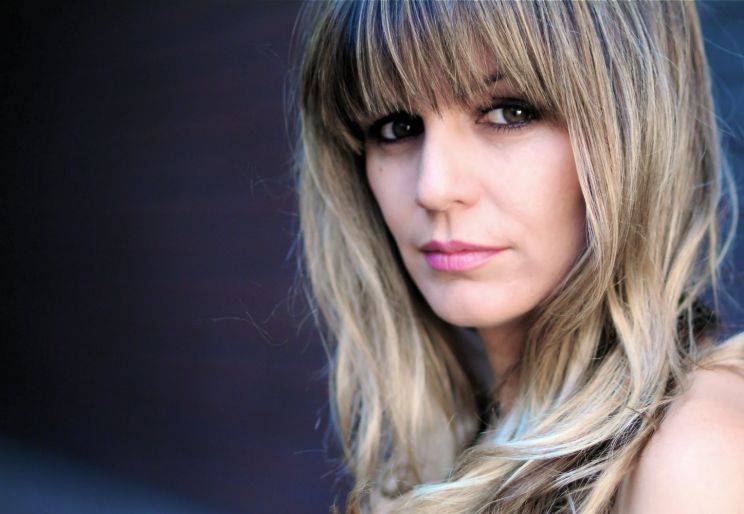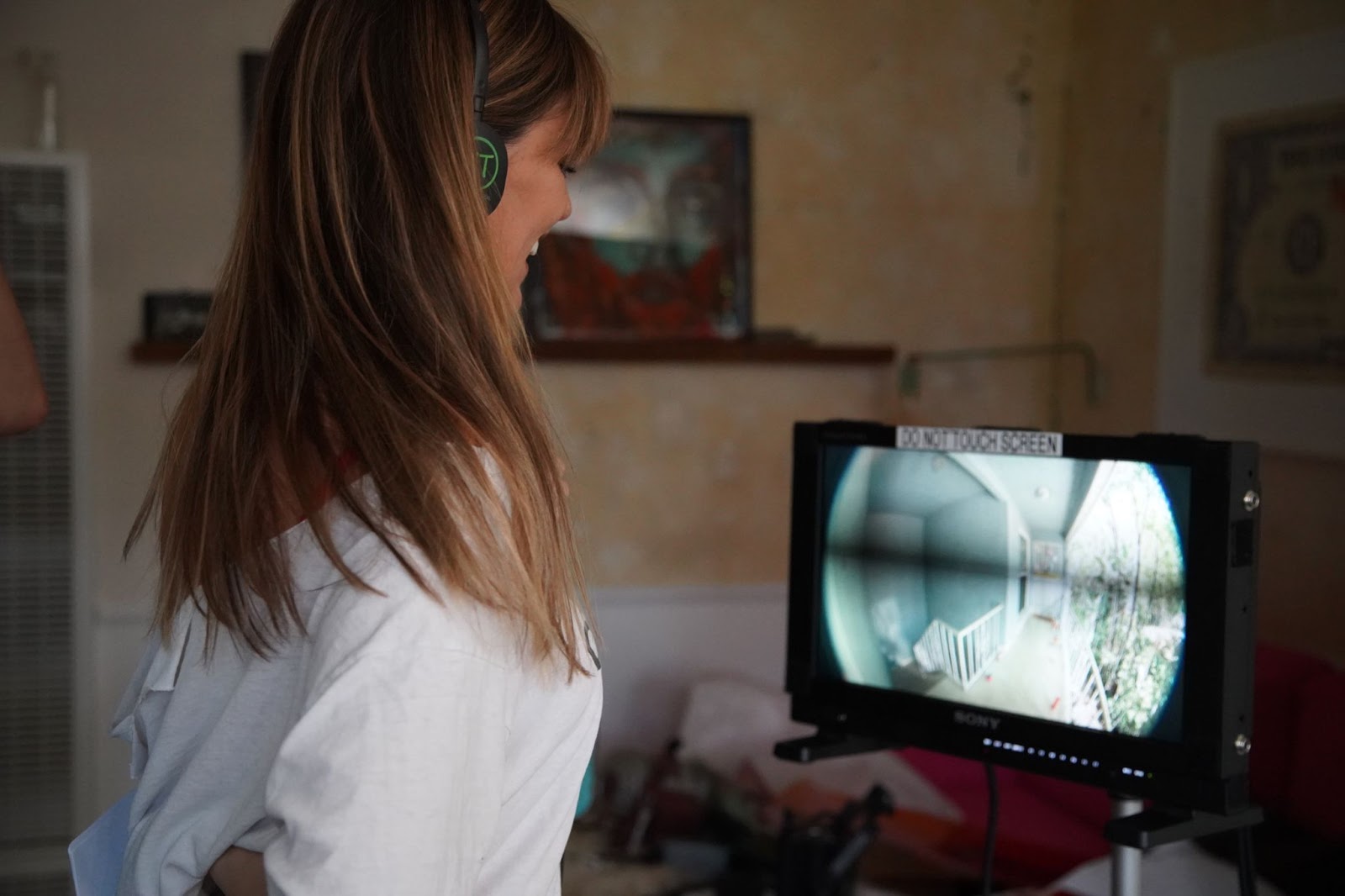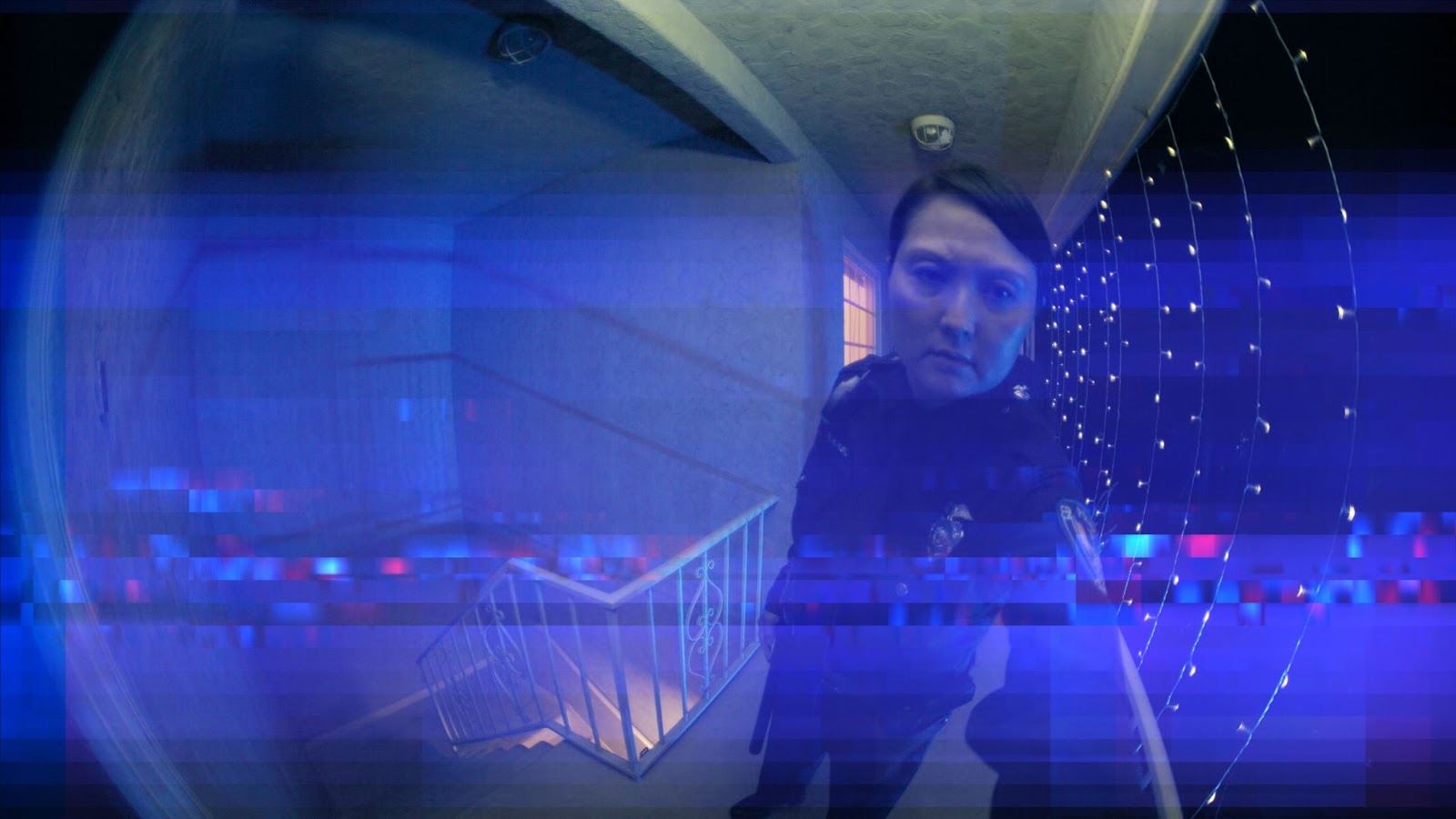Secret Portals: A conversation with Ring Master, India Dupré
A conversation with Ring Master, India Dupré

India, how did the idea for the concept of Ring come to you? Was there any real-life experience behind its conception?
I was flicking through our own Ring Camera footage one day and felt a little like I was spying on our neighbors who had become oblivious to the camera stuck by our door. It was fascinating. You could hear tail ends of conversations and then the footage would flicker out. I thought to myself, this would be an interesting way to tell a story as the viewer would need to fill in the missing gaps with their imagination. I wrote a one page synopsis with descriptions like: Affair Guy gets stuck inside. Gurney comes out of the door.
And Yes! I lived in the actual apartment we shot from for years and experienced many things similar to the film. It was horrifying to hear people fighting and one night the police came to our door and handcuffed my husband as they had the wrong door number. It felt like a cycle (a ring!), couples moving in, breaking up, moving out, then new people moving in. There was also certainly a cycle to domestic violence - (the tension building up, the explosion, the apologies, the slow return to normal and then the nervousness and fear of when it will all happen again.)

How was the doorbell camera POV effect achieved technically?
We studied how different times of the day affected the light and the specific way the camera shutter opens with and without movement. Our DP, David Auerbach used a fisheye lens on a Black Magic Camera instead of an actual Ring camera as we felt if the film made it to cinemas, high def footage would hold up on a big screen. Our Sound Recorder, Phil Jackson, placed a mic in the outside light to get a real sense of the sound quality as people were in and out of the door bell’s range. Our sound mixer, Scott Jennings then added noises like the dog walking and neighborhood sounds to keep it feeling alive. Our Gaffer, Gustavo Brum, created different lighting conditions mimicking different times of day to help the viewer feel the passing of time. Our colorist Erich Zander emphasized this with light vignettes to help focus the viewer on the drama. Composer Kurt Oldman kept tensions high with his driving and haunting score adding an unsettling and eerie feeling. I was so fortunate for all of our crew who went above and beyond.Our budget was tiny but people gave it their all. Jena Gautherot found delivery worker and police costumes to give it a sense of authenticity and the actors were all my friends who I was thrilled to cast. We used our own apartment building and our neighbors played ambulance workers. David, our DP, played the UPS guy. Most people had several jobs.

You managed to strike a nice balance between what otherwise could have been a gimmicky concept and a story that keeps the viewer interested. The unique POV didn't detract nor diminish what seemed to be your priority - the story. How much, if at all, did the doorbell cam perspective impact the script and/or the shoot?
Thank you. It didn’t feel confining, and was actually freeing, as there were definite boundaries and rules we had to adhere to. The most constraining limitations can sometimes be the most freeing ones!

Technically, did you need to approach anything differently when shooting the film, knowing the ring cam effect would limit the viewer's visual scope?
With no coverage, close ups or cutaways - we had to take a new approach to storytelling.
My husband Leander Rappmann (who plays Andrew, the man living next door in the film) worked his magic on the editing, which helped us take the film from 25 minutes in real time to 11:11. He used visual glitches with sound effects to speed the story forward. It became a signature of the film. We used longer takes toward the beginning that may have seemed benign (like Winnie leaving to walk her dog and then returning) to lure the viewer in, and then sped up the action with jump cuts as the film and drama progressed.

We watch disturbing behaviors and happenings in movies all the time - always captured by a camera's lens - yet we don't question whether or not it's ok for us to see what we're seeing. But the small, simple addition of a doorbell cam as the viewer's portal to the story seems to create both an unsettling feeling and a bit of a thrilling rush at the same time. How do you explain that?
The answer lies in the questions that I hoped the film would inspire and provoke - Is a video doorbell a reliable narrator? Can it be the protagonist? The hero? If character is what we do when no one is looking, what happens to our psyche when someone or something is always watching? What if I force the viewers into voyeurism? Are we hoping something bad will happen for our entertainment? To make us feel better about our own lives? Should we share the guilt when disaster strikes because we saw, and even enjoyed, the signs?

What are your personal thoughts on the value and/or dangers of doorbell cams? Do you own one? Do you now have a heightened awareness of yourself when you know you're in front of one?
Yes, the film was from my actual doorbell camera angle, when I see a video doorbell now I am definitely aware of it, knowing I’m being watched. They do make me feel safer - as a deterrent for actual threats.
But again, they raise questions. Are we are safer with the current inundation of technology? Do people even take the time to review their video doorbell footage? Does this form of technology only become important when something bad happens? Are we not interested when something good happens? Who else has access to our footage? What are they assessing about us and how are they using it?
I have a potential mini series in mind all from the perspective of video doorbells.
Thanks for reading and watching!
"The brand new social experience where you activate your gaming skills as you train like a spy."
- TimeOut
Take on thrilling, high-energy espionage challenges across different game zones.

SPYSCAPE+

Join now to get True Spies episodes early and ad-free every week, plus subscriber-only Debriefs and Q&As to bring you closer to your favorite spies and stories from the show. You’ll also get our exclusive series The Razumov Files and The Great James Bond Car Robbery!


Gadgets & Gifts
Explore a world of secrets together. Navigate through interactive exhibits and missions to discover your spy roles.
Your Spy Skills
We all have valuable spy skills - your mission is to discover yours. See if you have what it takes to be a secret agent, with our authentic spy skills evaluation* developed by a former Head of Training at British Intelligence. It's FREE so share & compare with friends now!
* Find more information about the scientific methods behind the evaluation here.


Stay Connected
Follow us for the latest
TIKTOK
INSTAGRAM
X
FACEBOOK
YOUTUBE